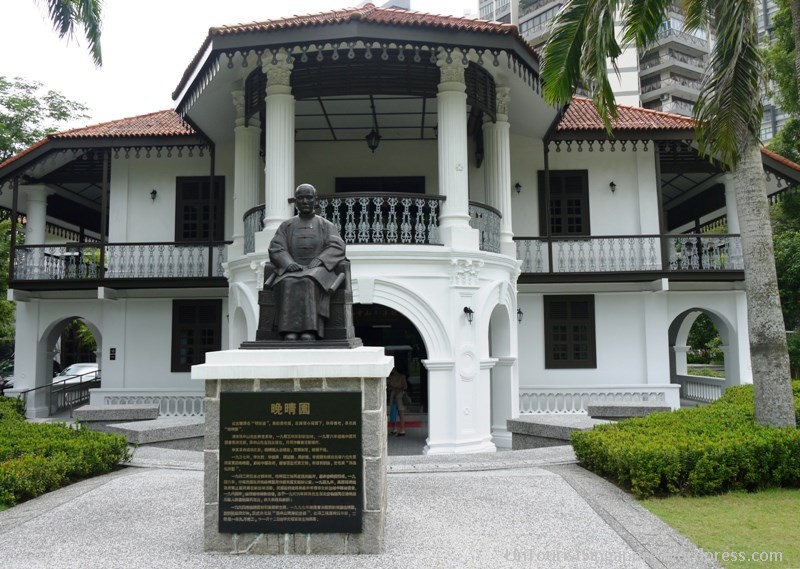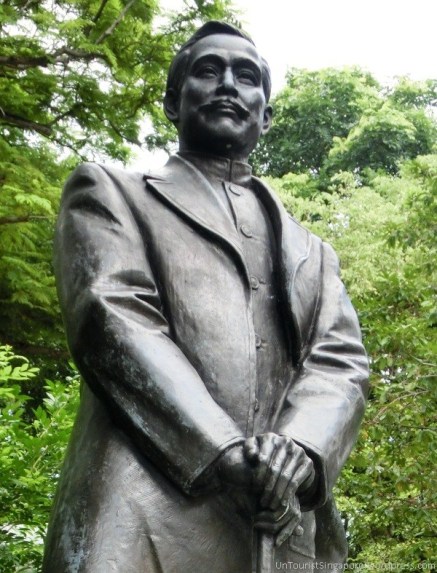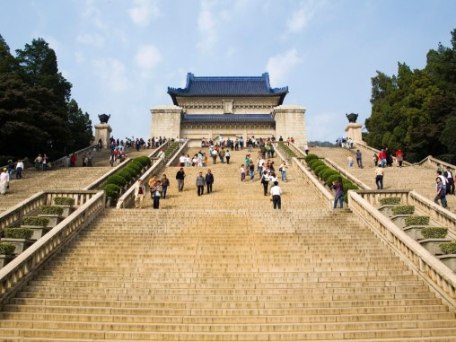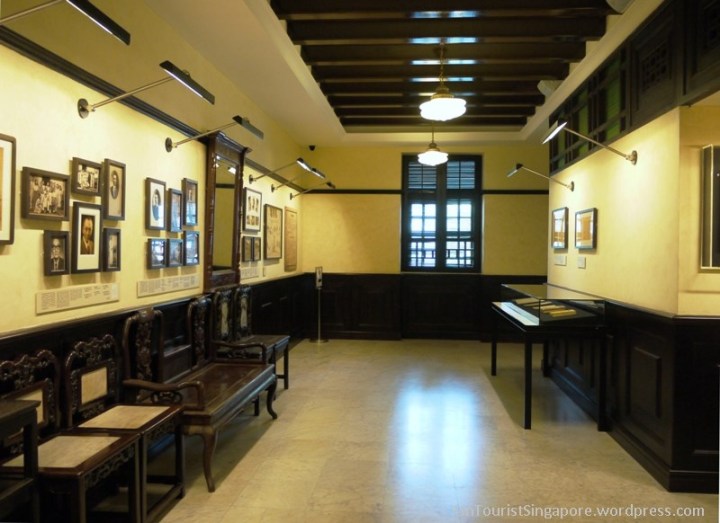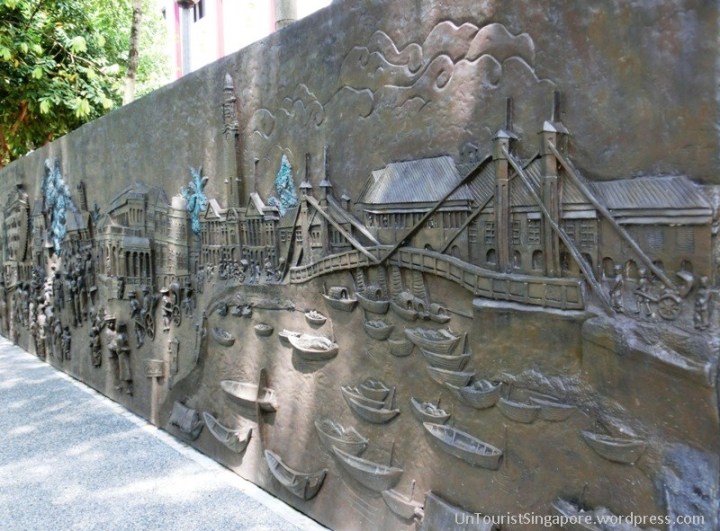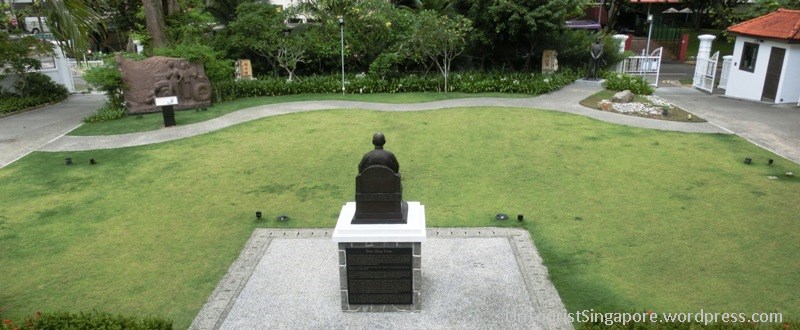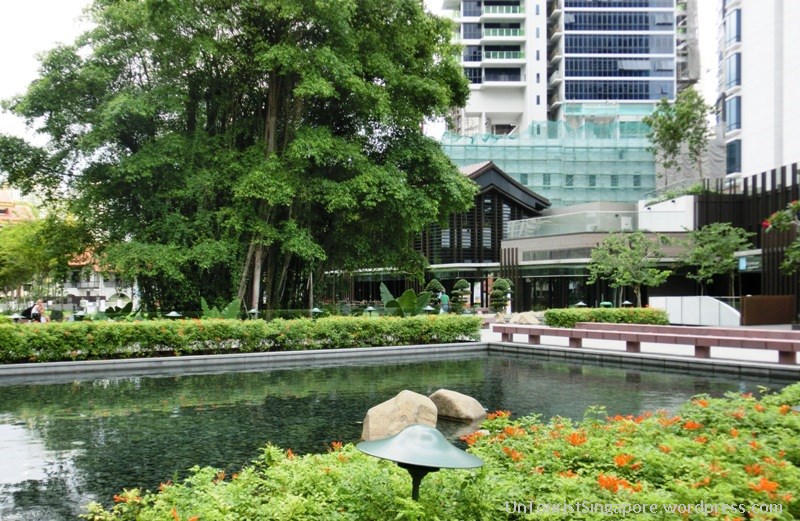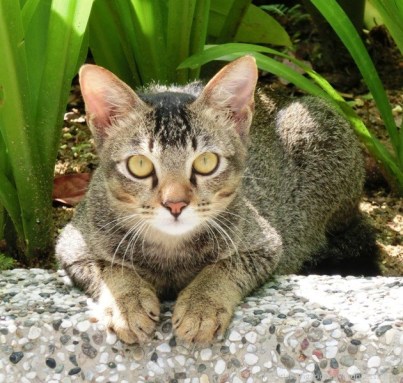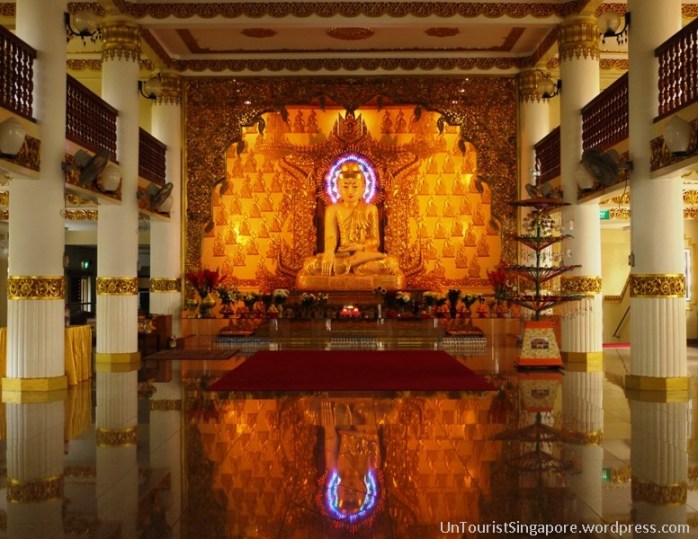If you don’t know a whole lot about Dr Sun Yat Sen, the revolutionary leader who helped found modern China, then a visit to this museum is an interesting way to learn more about the revered historical figure, and bone up on your Chinese history.
The museum is housed in a grand colonial-style villa built in 1900 that was once the South East Asian (also known as Nanyang) base for Dr Sun’s revolutionary activities. The private residence of a wealthy businessman who was a fervent supporter of Dr Sun, he had christened the villa Wan Qing Yuan (晚晴园), which translated literally means “clear evening garden”.
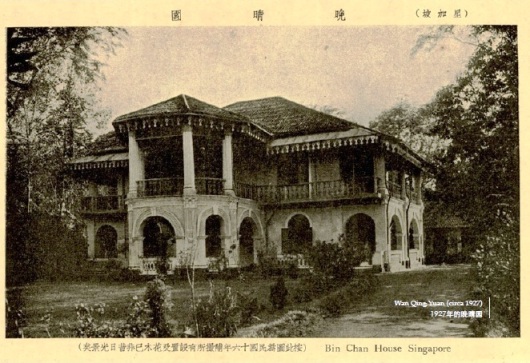
Wan Qing Yuan (previously named Bin Chan House), circa 1927 – Photo from Sun Yat Sen Nanyang Memorial Hall
Chinese being a language of much ambiguity as each character has multiple meanings, and combination of characters, or phrases, yield even more possibilities, Wan Qing Yuan has also been translated as “serene sunset garden”, and “a haven of peace in the twilight years”, given that the villa was meant to be the retirement home of the tycoon’s mother. Another interpretation suggests a pun on the “Qing” sounding like the character for “love” or “sentiments”, and so the house might also have been named around the theme of sentiments in the twilight years.
The villa was gazetted as a national monument in 1994, and was subsequently restored and opened as a museum in 2001. In recent years Singapore’s National Heritage Board has taken over management of the museum, redeveloping it extensively. In October 2011, to commemorate the 100th anniversary of the 1911 Revolution in China, the new Sun Yat Sen Nanyang Memorial Hall was unveiled.
A much grander museum now, it is a fitting tribute to, in Lee Kuan Yew’s words, “the great man who changed China’s destiny”.
THE LOWDOWN
Dr Sun Yat Sen (孫中山) was the first president of the provisional Republic of China. He played a key role in organising the overthrow of the Qing Dynasty (1844 – 1912), establishing modern China in 1912.
Dr Sun is also known by a Mandarin version of his name – Sun Zhongshan, which actually came from a Japanese name “Nakayama” (中山) given to him by a philosopher friend in Japan who supported his activities. It was common at the time for Chinese to have several names over the course of their lives. Dr Sun’s birth name was Sun Wen (孫文), and while at school in Hong Kong he was given the name Yat Sen (逸仙). It was this Cantonese rendition which eventually became his Western name.
As a revolutionary, Dr Sun was heavily influenced by his time spent abroad – he grew up in Hawaii in the US and went to school in Hong Kong. He later spent 16 years exiled in Europe, the U.S., Canada and Japan. He also traveled frequently throughout South East Asia (and this in the days before planes and automobiles), particularly Singapore, Malaya and Vietnam where there were large overseas Chinese populations which he thought were best positioned to recognise China’s need for reform.
Convinced that feudalism and the autocratic Qing Dynasty were the root of China’s non-development, Dr Sun set up the Chinese Revolutionary Alliance (Tong Meng Hui 同盟会) in Tokyo where he was living in 1905, making Japan the base for his anti-Qing movement. The Tong Meng Hui was the precursor to the Kuo Min Tang, which became the ruling political party in China in 1927. The party retreated to Taiwan in 1949 however after it was defeated by the Communist Party of China, which remains in power until today.
The Singapore chapter of the Tong Meng Hui was established in 1906, and became the South East Asian headquarters for the movement in 1907. Singapore was a thriving port city then, and with its strategic location and growing population of overseas Chinese it made for an ideal headquarters for Dr Sun’s expansion of his revolutionary activities. When Dr Sun was in Singapore, he frequently stayed at Wan Qing Yuan, and it became the hub for his activities and the meeting place for alliance members. At this time the Tong Meng Hui had over 20 branches worldwide, with close to 30,000 members.
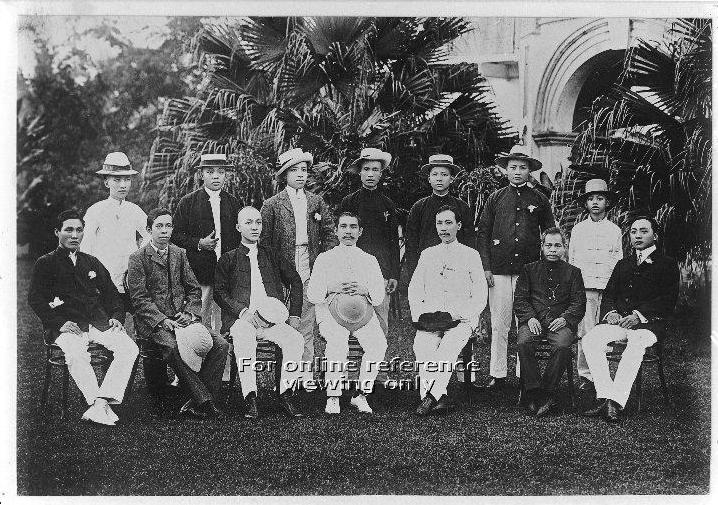
Sun Yat Sen and founding members of the Singapore Tong Meng Hui at Wan Qing Yuan 1906 – photo from National Archives of Singapore
In 1910, Dr Sun relocated the Tong Meng Hui’s Nanyang headquarters to Penang in Malaya, where he found his support was strongest.
Today, Sun Yat Sen museums and memorials in some form or other exist in many cities around the world, including Singapore, Penang, Hong Kong, Honolulu, San Diego, Vancouver, Toronto, Moscow, and of course throughout China, where many places take his name. A city in Guangdong province, where Dr Sun was born, has even been renamed Zhongshan city.
Dr Sun died of liver cancer in Beijing at the age of 58 in 1925. His remains today lie in the Zhong Shan Ling or Sun Yat Sen Mausoleum in Nanjing.
VISITING
The Sun Yat Sen Nanyang Memorial Hall museum contains 5 galleries over its 2 floors. Housing important documents, photographs, letters, paintings and other artefacts that trace the story of Dr Sun’s revolutionary journey, the museum also recognises the key members of the Singapore Tong Meng Hui, and documents the contributions of the overseas Chinese communities to the revolution in China.
1st gallery: Introduces the key Tong Meng Hui leaders in Singapore.
2nd gallery: Focuses on the founding of the Singapore chapter of the Tong Meng Hui, and contains a re-creation of Dr Sun’s study and library.
3rd gallery: Traces the key milestones in Dr Sun’s life.
4th gallery: Explores the impact of the 1911 Revolution on the Chinese communities in Singapore and South East Asia.
5th gallery: Contains topical exhibitions. There is currently an exhibition on the “6 Men Who Saved Wan Qing Yuan”.
The gardens of the villa are also well-maintained, containing sculptures and a 58 metre long bronze wall mural on Singapore’s “common memories”.
The museum has recently become the centrepiece in the adjacent Zhongshan Park new development, which builds on the memorial hall’s significance in the area. Opened in mid-2013, the integrated development features Zhongshan Mall, 2 tourist class hotels and an office tower. There is also a 4600+ square metre garden and public space, also called Zhongshan Park, which was designed to offer unobstructed views of the heritage museum building. The park features 2 lovely banyan trees that are preserved, so kudos to the architects for recognising and respecting the beauty of the trees.
The development of the new Zhongshan Park area has breathed life into the sleepy and otherwise gritty old neighbourhood of Balestier, which is still better known for old school fare such as Bak Kut Teh (Pork Ribs Soup) and Tau Sar Piah (Mung Bean pastries), and its many lighting and renovation supply shops.
LOCATION
12 Tai Gin Road (off of Balestier Road and then Ah Hood Road)
10am – 5pm. Open every day except Mondays.
HOW MUCH TIME
There is a lot to take in, so I suggest an hour and a half at least to properly tour the premises and browse the exhibits. Take some time also to reflect on the monumental turn of events that changed the course of China’s history, and the revolutionary characters and their many important discussions that took place in that very same villa over 100 years ago. Quite awe-inspiring.
The museum also has a souvenir shop if you want to spend a little more time picking out a keepsake.
TIDBITS
- Dr Sun’s 2nd wife was Soong Ching Ling (Song Qingling), a prominent figure herself in Chinese politics. Born into a wealthy family, Ching Ling’s younger sister Soong May Ling also rose to fame as the wife of Chiang Kai Shek, the leader of the Kuo Min Tang. The eponymously titled “The Soong Sisters” was a 1997 Hong Kong movie starring ex-Bond girl Michelle Yeoh.
- One of the key leaders of the Tong Meng Hui in Singapore was rubber magnate Teo Eng Hock, who owned Wan Qing Yuan and generously contributed the villa to support Dr Sun’s activities. Teo Eng Hock is the great-granduncle of Singapore’s current Deputy Prime Minister Teo Chee Hean.
- The magnificent Maha Sasana Ramsi Burmese Buddhist Temple is located right next door to the museum. A national heritage site itself, the temple houses the largest Buddha statue outside of Myanmar made of pure white marble. Pop in for a quick peek if you have time (footwear must be removed, as in all temples).
TAKE NOTE
- Museums are favourite venues for school field trips. On the morning we visited an entire school was visiting the museum, which unfortunately did mar our experience. Best to visit in the afternoons when you are less likely to clash with a school trip, or call the museum to enquire about visits for the day.
USEFUL LINKS

